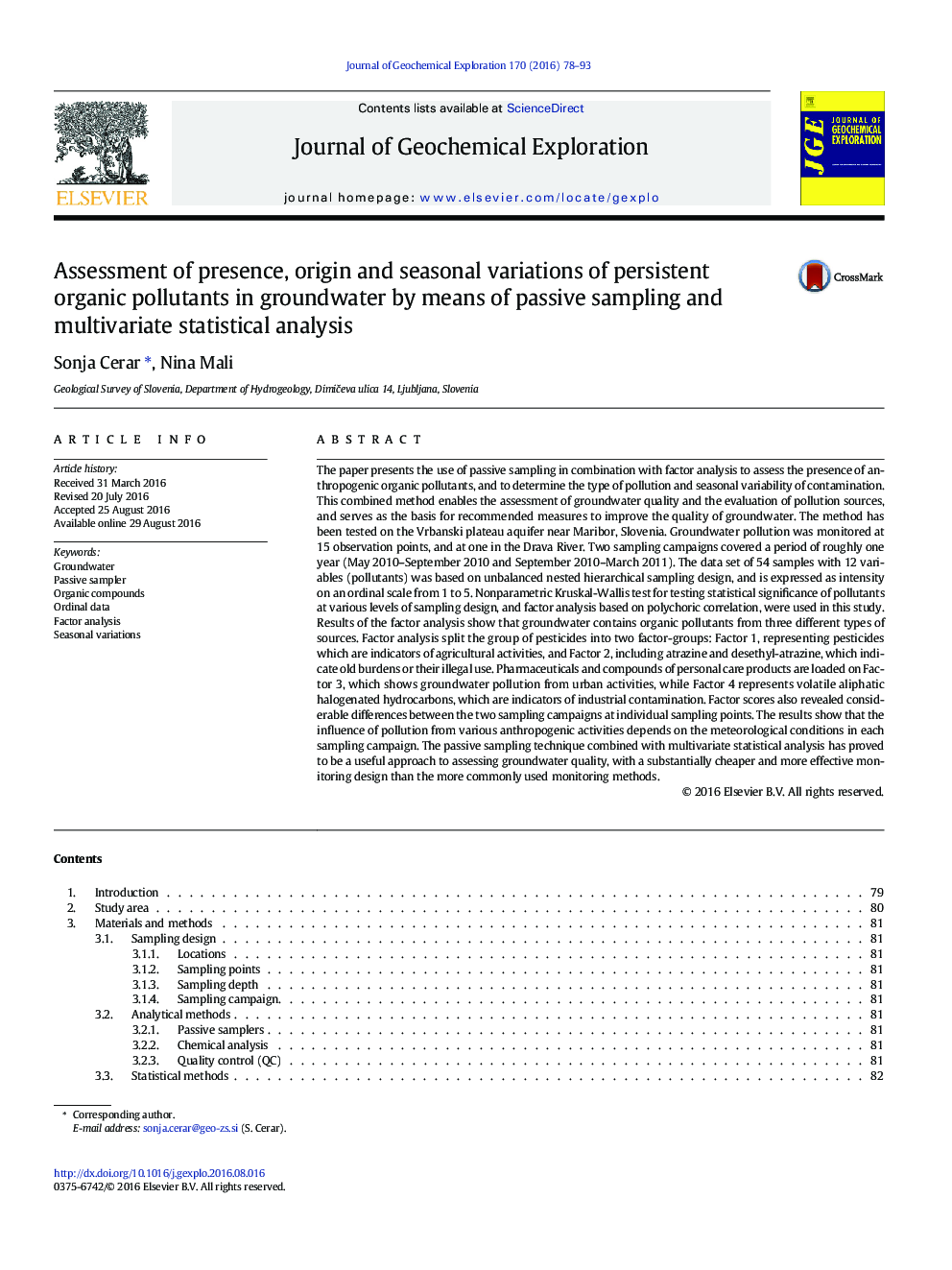| کد مقاله | کد نشریه | سال انتشار | مقاله انگلیسی | نسخه تمام متن |
|---|---|---|---|---|
| 4456885 | 1620889 | 2016 | 16 صفحه PDF | دانلود رایگان |
• Organic pollutants in groundwater were studied using passive sampling and factor analysis on ordinal data.
• Results of factor analysis were confirmed by results of hierarchical cluster analysis.
• Groundwater contains organic compounds from agriculture, urban activities and industry.
• The summer period is the main season for organic compounds of agricultural and industrial origin.
• Winter is the main season for urban pollution.
The paper presents the use of passive sampling in combination with factor analysis to assess the presence of anthropogenic organic pollutants, and to determine the type of pollution and seasonal variability of contamination. This combined method enables the assessment of groundwater quality and the evaluation of pollution sources, and serves as the basis for recommended measures to improve the quality of groundwater. The method has been tested on the Vrbanski plateau aquifer near Maribor, Slovenia. Groundwater pollution was monitored at 15 observation points, and at one in the Drava River. Two sampling campaigns covered a period of roughly one year (May 2010–September 2010 and September 2010–March 2011). The data set of 54 samples with 12 variables (pollutants) was based on unbalanced nested hierarchical sampling design, and is expressed as intensity on an ordinal scale from 1 to 5. Nonparametric Kruskal-Wallis test for testing statistical significance of pollutants at various levels of sampling design, and factor analysis based on polychoric correlation, were used in this study. Results of the factor analysis show that groundwater contains organic pollutants from three different types of sources. Factor analysis split the group of pesticides into two factor-groups: Factor 1, representing pesticides which are indicators of agricultural activities, and Factor 2, including atrazine and desethyl-atrazine, which indicate old burdens or their illegal use. Pharmaceuticals and compounds of personal care products are loaded on Factor 3, which shows groundwater pollution from urban activities, while Factor 4 represents volatile aliphatic halogenated hydrocarbons, which are indicators of industrial contamination. Factor scores also revealed considerable differences between the two sampling campaigns at individual sampling points. The results show that the influence of pollution from various anthropogenic activities depends on the meteorological conditions in each sampling campaign. The passive sampling technique combined with multivariate statistical analysis has proved to be a useful approach to assessing groundwater quality, with a substantially cheaper and more effective monitoring design than the more commonly used monitoring methods.
Journal: Journal of Geochemical Exploration - Volume 170, November 2016, Pages 78–93
